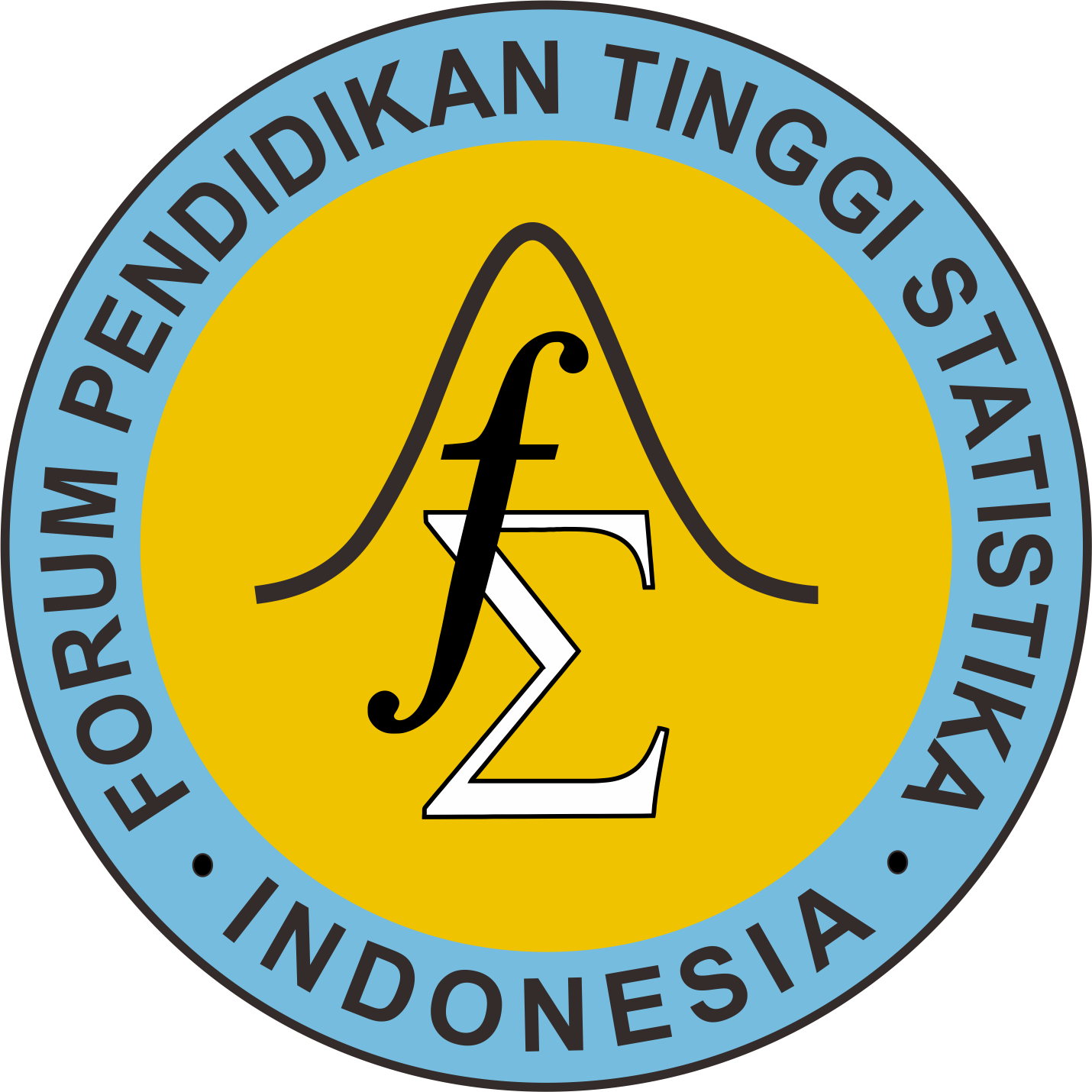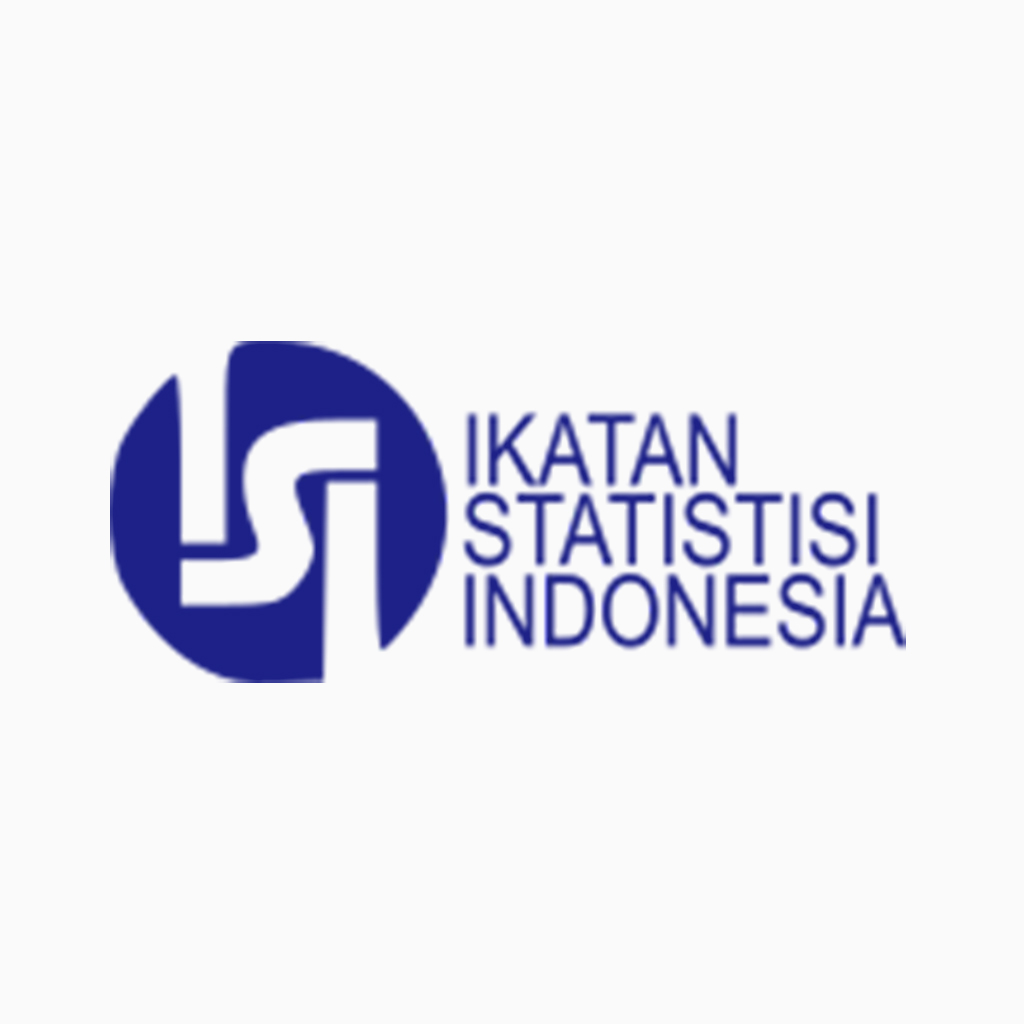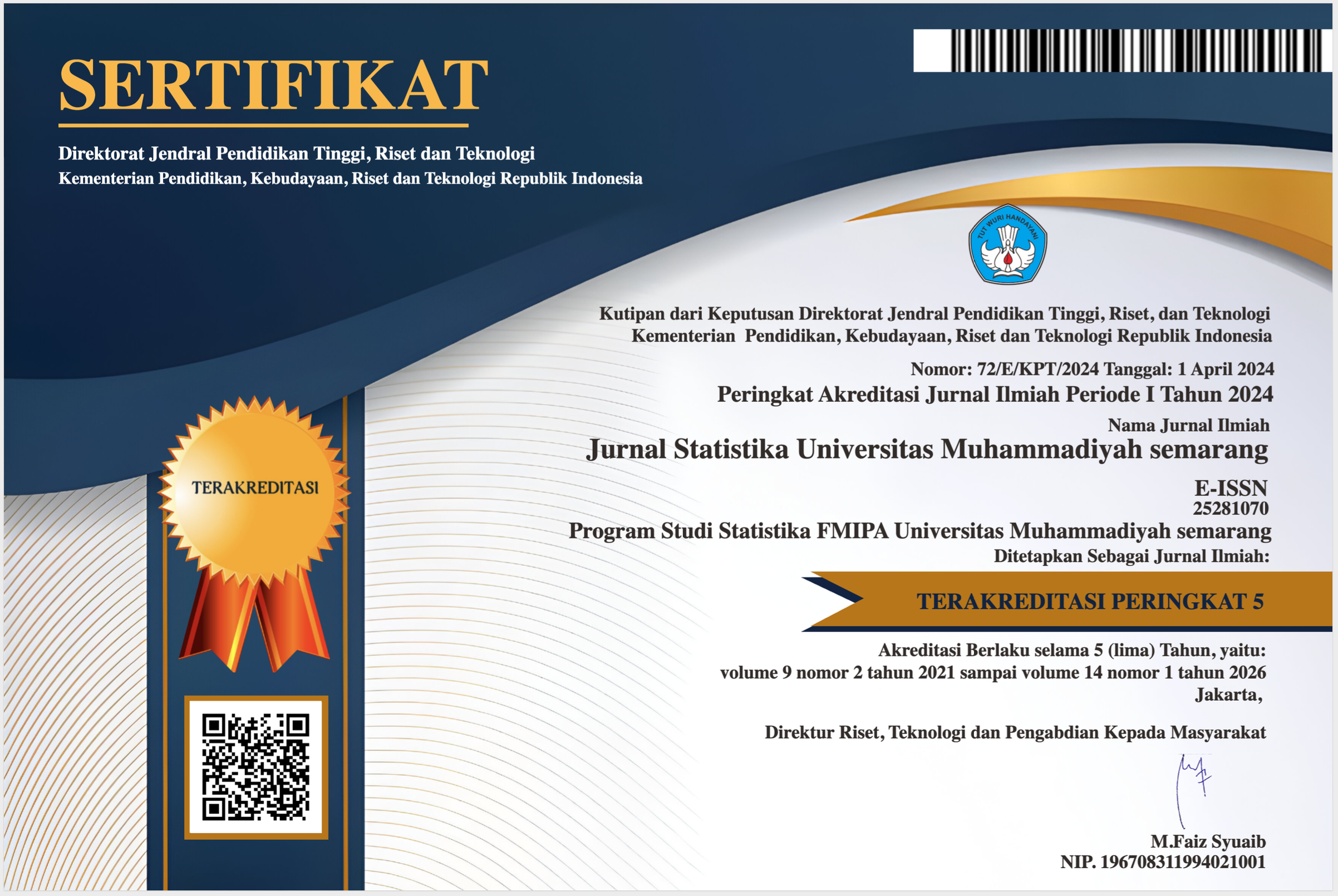PENGELOMPOKAN DESA ATAU KELURAHAN DI KUTAI KARTANEGARA MENGGUNAKAN ALGORITMA DIVISIVE ANALYSIS
(1) Program Studi Statistika, Jurusan Matematika, FMIPA, Universitas Mulawarman
(2) Program Studi Statistika, Jurusan Matematika, FMIPA, Universitas Mulawarman
(3) Program Studi Statistika, Jurusan Matematika, FMIPA, Universitas Mulawarman
(*) Corresponding Author
Abstract
Potential Villages (PODES) provide data on the existence, availability and development of the potential of each government administrative area. In order to make it easier for governments to make policies for a region, it is necessary to group the village and sub-districts. Cluster analysis is an analysis that aims to group objects based on the information that found in the data. One of the cluster analysis methods is the divisive analysis, which is a hierarchical grouping method with a top-down approach, where all objects are placed in one cluster and then sequentially divided into separate groups. This research aim to group villages or sub-districts in Kutai Kartanegara based on the determinants of village backwardness and obtaining the silhouette coefficient value from the optimal cluster analysis using the divisive analysis algorithm. The data used is the 2018 PODES data in Kutai Kartanegara and used 15 variables from natural and environmental factors, facilities infrastructure and access factors as well as socio-economic factors of the population. The results of the optimal cluster formed in the grouping of villages or sub-districts in Kutai Kartanegara using the divisive analysis method are 2 clusters. Cluster 1 consisting of 230 villages or sub-districts and cluster 2 consisting of 2 sub-districts. Silhouette coefficient value for data validation from clustering village or sub-districts in Kutai Kartanegara using the divisive analysis method produces 2 clusters is 0,744 which states that the cluster structure formed in this grouping is a strong structure.
Keywords
Full Text:
PDFReferences
Badan Pusat Statistik. (2018). Laporan Perekonomian Provinsi Kalimantan Timur 2018. Samarinda: Badan Pusat Statistik
Fathia, A., Rahmawati, R., & Tarno. (2016). Analisis Klaster Kecamatan Di Kabupaten Semarang Berdasarkan Potensi Desa Menggunakan Metode Ward dan Single Linkage. Jurnal Gaussian, Vol 5, No 4, 801-810
Prasetyo, E. (2012). Data Mining: Konsep dan Aplikasi Menggunakan Matlab. Yogyakarta: Andi Offset.
Gorenescu, F. (2011). Data Mining: Concept, Model, And Technique. Berlin: Springer.
Han, J., Kamber, M. & Pei, J.. (2012). Data Mining: Concepts and Techniques Third Edition. San Fransisco: Morgan Kauffman Publisher.
Article Metrics
Abstract view : 521 timesPDF - 217 times
DOI: https://doi.org/10.26714/jsunimus.9.2.2021.101-108
Refbacks
- There are currently no refbacks.
Copyright (c) 2022 Jurnal Statistika Universitas Muhammadiyah Semarang
Editorial Office:
Department of Statistics
Faculty Of Mathematics And Natural Sciences
Universitas Muhammadiyah Semarang
Jl. Kedungmundu No. 18 Semarang Indonesia
Published by:
Department of Statistics Universitas Muhammadiyah Semarang
This work is licensed under a Creative Commons Attribution 4.0 International License








2.png)



